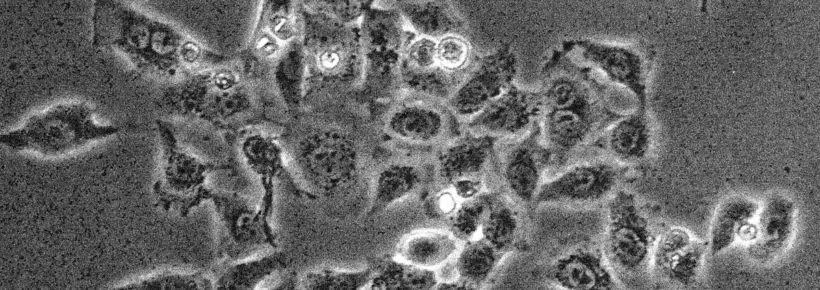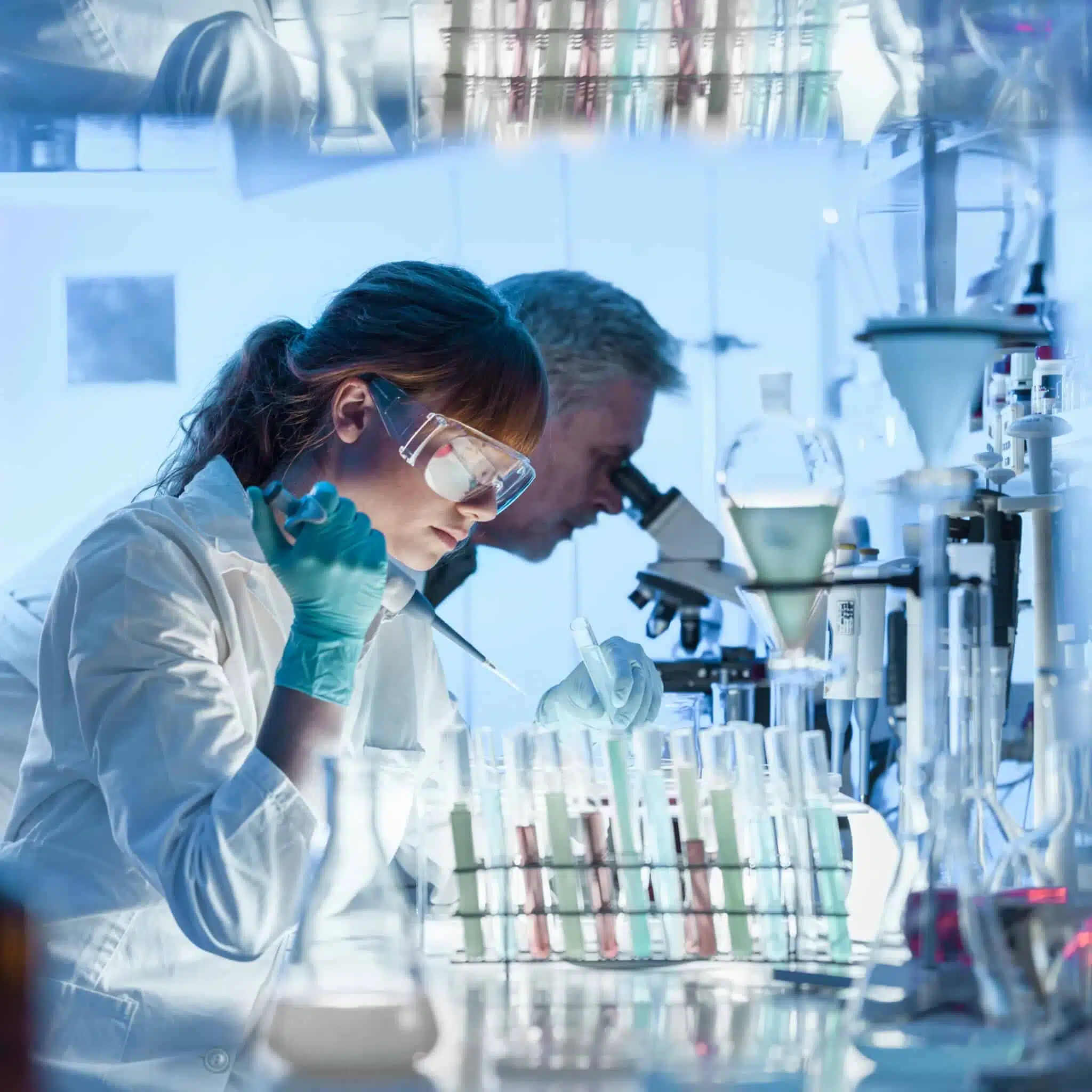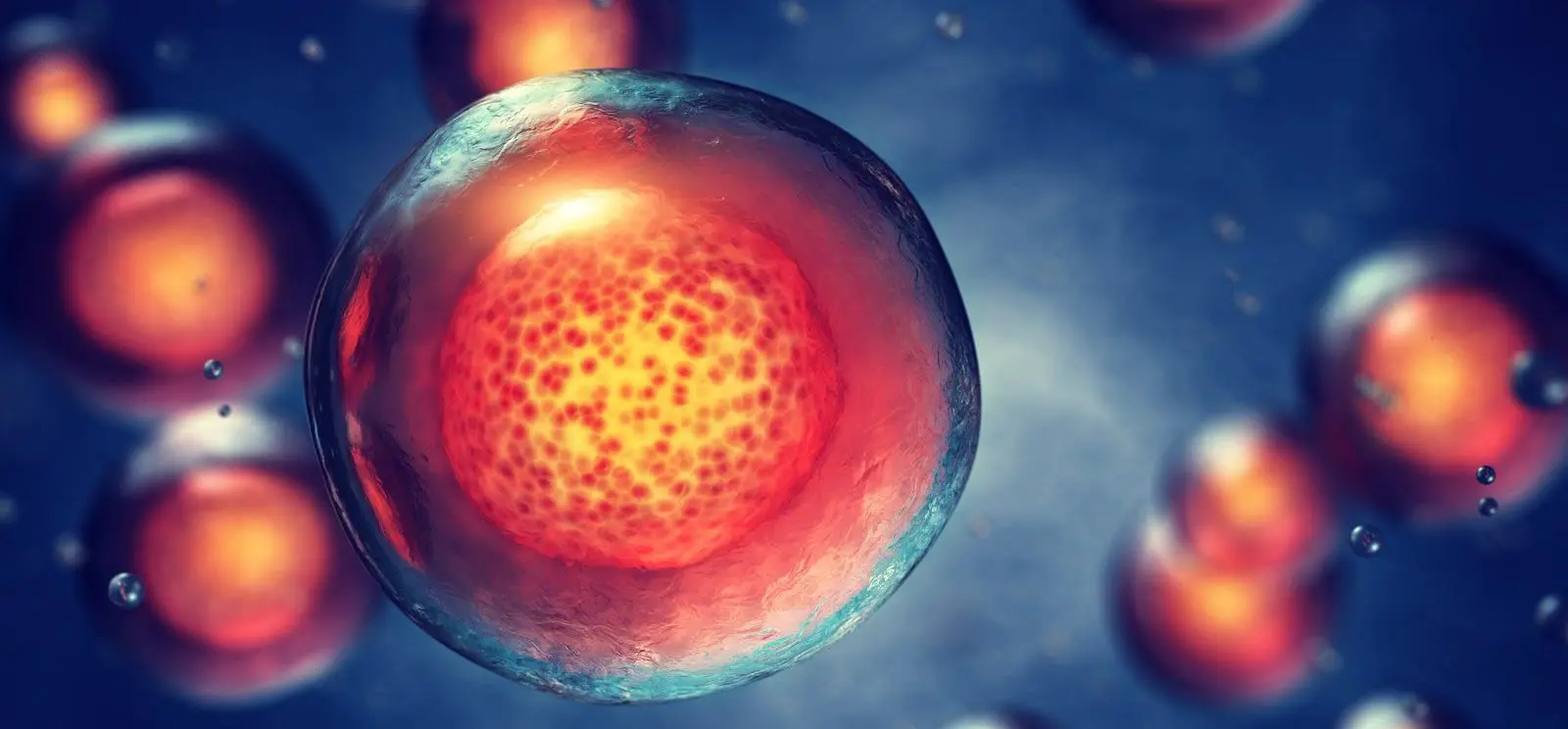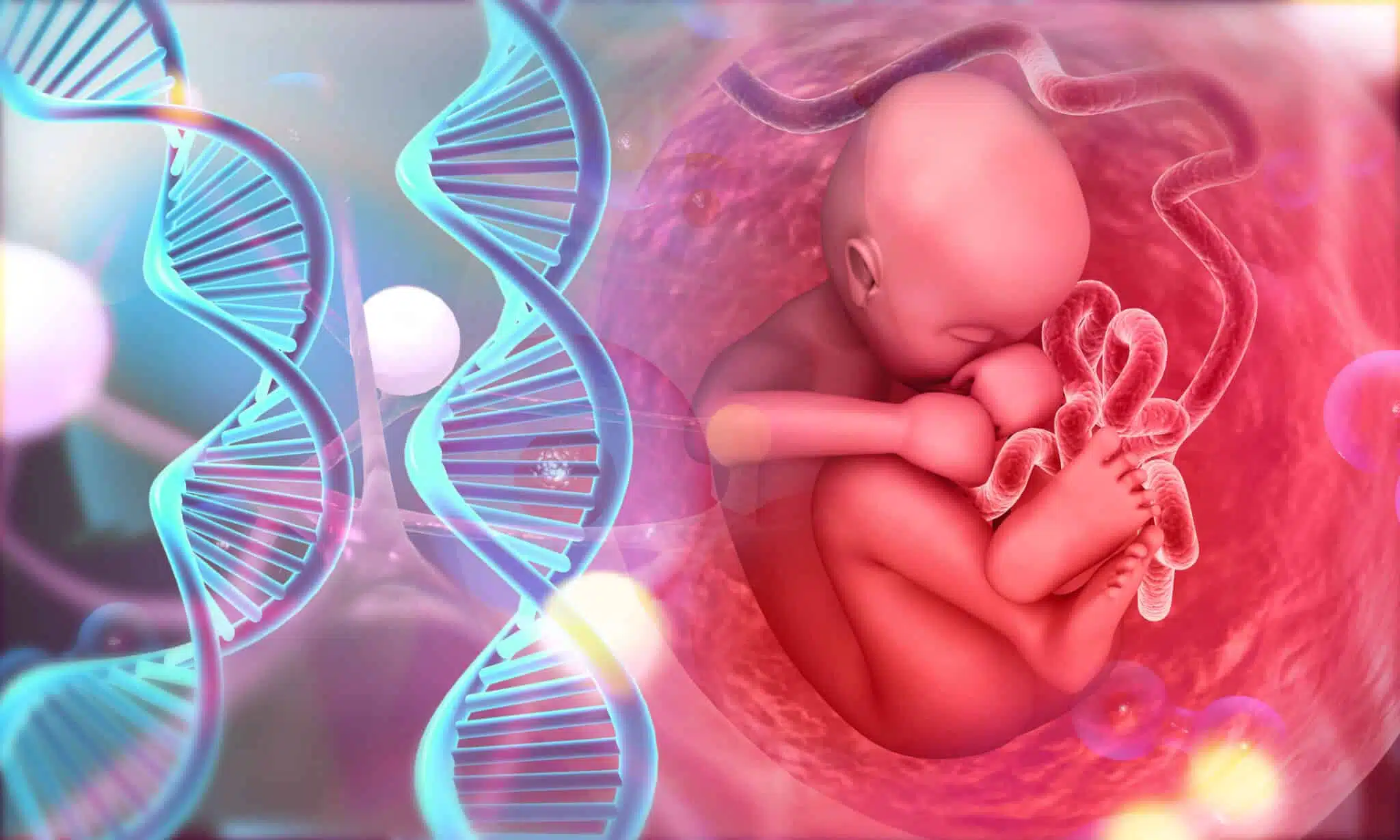Do some products contain parts of aborted babies?
The short answer is: “Yes.”
However, today’s consumer products are not the soap and lampshades of “recycled” Nazi concentration camp victims that we see in museums. The new utilitarian use of “people as product” is a sophisticated enterprise that is not visible to the human eye.
Perhaps you are a diligent supporter and promoter of pro-life legislation, only vote for pro-life candidates, and avoid entertainment produced by musicians and actors who openly support Planned Parenthood. However, regardless of how strongly you support life, you may unknowingly be cooperating in aborted fetal cell research by purchasing products that use aborted fetuses either in the product itself or in its development.

Perhaps you take Enbrel (Amgen) to relieve your rheumatoid arthritis. Maybe someone you know was prescribed Zoastavax, a shingles vaccine, at an annual physical. It may be that your mother suffers from diabetes and renal failure and obtains relief from Arensep (Amgen). Perhaps your grandfather was administered the blood product Repro during an angioplasty. Many school districts require that your children receive the MMRII (the Merck Measles-Mumps-Rubella vaccine). Your children might enjoy using coffee creamers and eat soup with artificial flavor enhancers (Senomyx and Firmenich) tested on artificial taste buds engineered from aborted fetal cells.
Because of the complexities of Food and Drug Administration (FDA) labeling, you would probably not know that these products come from the abortion industry unless someone informed you.
Types of Products That Use Aborted Fetuses
Products related to fetal material can be broken down into two categories, those that contain fetal tissue, and those that were developed using research on fetal tissue. These products tend to be artificial flavors, cosmetics, and medicines/vaccines.
Food and Drink
Food and beverages do not contain any aborted fetal material but may be tastier because of the nature of the research done in their development.
For example, the American biotech company Senomyx developed chemical additives that can enhance flavor and smell. To do this, they had to produce an army of never-tiring taste testers — that is, flavor receptors engineered from human embryonic kidney cells (HEK-293, a fetal kidney cell line [12] popular in pharmaceutical research).1 These artificial taste buds told developers which products were desirable. Their goal is to produce low-sugar and low-sodium products that taste sweet or salty while actually using less sugar or sodium in the product.

Does your Nestle Coffee-mate Pumpkin Spice creamer taste more like autumn? Does your Maggi bouillon taste just like chicken?
Thank Senomyx [14].
The laboratory-created artificial enhancers do not have to be tested at length by the FDA because the Senomyx chemical “flavor compounds [were] used in proportions less than one part per million” and were classified as artificial flavors.2
In 2005, Senomyx had contracts to develop products for Kraft Foods, Nestle, Campbell Soup and Coca-Cola.3 However, pro-lifers boycotted PepsiCo when they discovered that it was cooperating with Senomyx to develop a reduced sugar beverage. This boycott caused Kraft-Cadbury Adams LLC and Campbell Soup to cancel their contracts with Senomyx.
In a 2012 letter to Children of God for Life, PepsiCo stated [15] that “Senomyx does not use HEK cells or any other tissues or cell lines derived from human embryos or babies for research performed on behalf of PepsiCo.” However, the corporation began working with Senomyx [16] on two products developed with Sweetmyx 617, a new Senomyx sweet taste modifier.
In 2018, Senomyx merged with Firmenich [17], a Swiss company that specializes in fragrance and flavors. The merge does not seem to have stopped the use of aborted fetal cells in development. Firmenich acquired Senomyx’s “taste platform [17],” which included the use of the HEK-293 cells. The Children of God for Life published this report [18] that states that Firmenich uses HEK cells.
Cosmetics
The fountain of youth appears to be…babies.
Commercially, it’s known as processed skin proteins (PSP), developed at the University of Lausanne to heal burns and wounds by regenerating traumatized skin. The fetal skin cell line that PSPs are based on was taken from an electively aborted baby [19] whose body was donated to the University.
Neocutis, a San Francisco-based firm, uses PSP in some of their anti-aging skin products. Its website claims that the trademarked PSP “harnesses the power of Human Growth Factors, Interleukins and other Cytokines, to help deliver state-of-the-art skin revitalization.”
Vaccines and Medications
The Vaccine Chart of the Sound Choice Pharmaceutical Institute (SCPI) lists dozens of vaccines and medical products that contain aborted fetal cell lines. This chart also lists ethical vaccine alternatives when they are available. The morality of using these vaccines developed from fetal cell lines is a complicated issue, though there are ethical guidelines [20] available.

SCPI is a biomedical research organization headed by Theresa Deisher, who holds a PhD in Molecular and Cellular Physiology from Stanford. Deisher was the first person to identify and patent stem cells from the adult heart. She has worked for industry leaders such as Amgen, Genetech, and Repligen. She has an insider’s understanding of genetic engineering.
SCPI “promotes awareness about the widespread use of fetal human material in drug discovery, development and commercialization.” It reveals that no vaccine product is completely pure: “You will find contaminating DNA and cellular debris from the production cell in your final product. When we switch from using animal cells to using human cells we now have human DNA in our vaccines and our drugs.”5
The problem is four-fold:
- Aborted baby parts are used for experiments.
- Cell lines based on aborted babies are used in the production of various products.
- There is fetal cellular DNA debris in vaccines and medications.
- We cannot fully remove DNA from vaccines, and we don’t know the effects this may have as this topic has not been sufficiently studied.
Fetal Tissue Research
Much research is currently being done with fetal cells. We can deduce this because there is a lucrative market for the parts of unborn babies. In a series of undercover videos [22], David Daleiden’s Center for Medical Progress exposed Planned Parenthood abortion clinics selling aborted unborn baby parts to investigators posing as medical researchers.
Planned Parenthood successfully sued David Daleiden for these videos, saying they were obtained through illegal means [23].
The harvesting of organs from aborted unborn babies has been going on without public pushback. Dr. Theresa Deisher [24] attests in her interview with Robert F. Kennedy, Jr., that when a heart is taken from an aborted fetus, they extract it while the child is still alive – and without anesthesia. Fresh aborted babies are abundant and are a time-saver compared to the days spent obtaining and preparing animal tissue for laboratory experiments.

Much more recently, in 2018, professor emeritus Dr. Stanley Plotkin, lead developer of the Rubella vaccine for the Wistar Institute in the 1960s, was deposed [25] as an expert witness on Vaccinology in a Michigan child custody case. One particularly interesting series of questions regarded the number of aborted babes Plotkin has used in his experiments:
Question: “So this study involved 74 fetuses, correct?”
Plotkin: “Seventy-six.”
Question: “And these fetuses were all three months or older when aborted, correct?”
Plotkin: “Yes.”6
All cells (including those harvested from aborted babies) have a finite capacity to replicate due to cellular aging. This vaccine trial thus required many cell lines in order to achieve its end.
Women’s Lives Are Risked for Profit
Because fetal tissue can be very valuable, abortion providers have a strong incentive to ensure that the tissue is as intact as possible. Often the tissue is too mutilated to be useful, or is damaged by the chemicals used to kill the child. As a result, many abortionists alter their procedures to help produce more intact samples:
“If we alter our process, and we are able to obtain intact fetal cadavers, we can make it part of the budget that any dissections are this, and splitting the specimens into different shipments is this, it’s all just a matter of line items.” ~ Melissa Farrel [26], Director of Research for Planned Parenthood Gulf Coast
“We’ve been very good at getting heart, lung, liver, because we know that. So I’m not gonna crush that part. I’m going to basically crush below. I’m gonna crush above. And I’m gonna see if I can get it all intact.” ~ Deborah Nucatola [27], MD, Senior Director of Medical Services, Planned Parenthood Federation of America
This sort of behavior is particularly troubling because altering a procedure for the sake of obtaining fetal tissue puts the mother’s health and life second. In fact, since 1993 it has been expressly illegal [28] to make any alterations to the timing, method, or abortion procedure to obtain fetal tissue. This, however, does not appear to have stopped abortion providers from doing so.

Failed Fetal Tissue Experiments
While research using fetal tissue has produced some notable products, fetal tissue experiments often fail. At times, they have even killed people.
Perhaps the most common use of fetal tissue has been in transplants to treat various illnesses. The earliest recorded use in this manner was in 1921, when doctors grafted fetal tissue onto a man’s testicles [29] in a failed effort to treat Addisons. Since then, doctors have attempted to use fetal tissue transplants to treat diabetes [30], with poor success rates.
Many other transplants have been conducted for a variety of conditions. Study results [31] and the survival rates of the patients, however, have been dismal. Though to date hundreds of clinical trials have been tried using various types of fetal transplants, only a few have been successful.
Often, this has been the result of particularly hasty and cavalier research. Doctors have at times proceed with implantation before having even the most basic of understanding of the conditions they were seeking to treat. Nowhere is this more evident than in transplants to Parkinson’s patients [32] in 2001. What was meant to be a miracle cure was anything but. The lucky patients saw little to no improvement, but the unlucky ones suffered through what researchers described as “absolutely devastating” [33] results, “nightmarish” writhing, unintelligible speech, and a loss of even the ability to feed themselves.
Despite the researchers’ firm insistence that the transplants needed to halt, they have continued. And the results have not notably improved [32]. No good evidence of improved results exists, and transplants have frequently been associated with severe increases in involuntary muscle movement.
In recent years, research [34] on fetal tissue transplants for some conditions, such as Huntington’s, has been slightly more positive. At least in the short term, some patients experienced notable improvement. However, other patients suffered complications, including mass lesions [35] ultimately resulting in death.

The FDA’s Humanized Mice
In recent years, the US Food and Drug Administration has become increasingly focused on experimentation using fetal tissue [36]. Most notably, the FDA has used large sums of taxpayer money to purchase fresh human tissue for use in experiments for humanizing mice. This practice is perhaps somewhat less bizarre than it sounds, as mice with transplanted human tissue are commonly used for research in many different fields.
Nevertheless, after the release of emails between the FDA and procurement groups, many were disturbed by the manner in which fetal remains were discussed. For example, in the emails [37] doctors frequently expressed frustration that bodies were mutilated to the point where they couldn’t tell the sex from their genitals, or that the tissue was ruined by the injections used to kill the child.
Additionally, since buying and selling fetal tissue is prohibited, the FDA’s purchase of human fetal tissue was likely illegal. In fact, in 2018 its contracts were terminated [36] by the government for this reason, suspending any research that required new fetal tissue. In 2021, however, the suspension was lifted [38], and it appears that the FDA has returned to its purchase and trade of fetal tissue.
A Better Option: Adult Stem Cell Research
Dr. David Vice is Adjunct Professor of Molecular Genetics at the John Paul II Institute and President of the Charlotte Lozier Institute. According to him, adult stem cells are the new “gold standard” [39] for research and, unlike fetal stem cells, have led to actual cures [40]. He writes, “The superiority of adult stem cells in the clinic and the mounting evidence supporting their effectiveness in regeneration and repair make adult stem cells the gold standard of stem cells for patients.”
The success of adult stem cell research is not necessarily unexpected. Even since early research on treating diabetes, adult cell transplants have produced significantly better results [30] than fetal tissue. The hope that fetal stem cells would turn out to be a miracle cure was little more than that, a hope, and one that has been repeatedly disproven.
We should then ask why we are still using embryonic cell lines when adult stem cells have become the Gold Standard. There seems to be little excuse to use aborted babies.
U.S. Policy on Products That Use Aborted Babies
On the 20th Anniversary of Roe v. Wade in 1993, President Bill Clinton signed [41] five abortion-related memoranda, one of which reversed the George H. W. Bush-era moratorium on harvesting new fetal tissue for research. Clinton claimed, “This moratorium has significantly hampered the development of possible treatments for individuals afflicted with serious diseases and disorders, such as Parkinson’s disease, Alzheimer’s disease, diabetes and leukemia.”
In 2006, there was a major debate among bioethicists as to whether or not the United States would allow the use of new lines of aborted fetal stem cells in research [42]. The medical research community had already decided that the future lay with human-animal hybrids and new aborted fetal cell lines.
According to a statement submitted to the President’s Bioethics Council:
Aborted human DNA in our vaccines is not the end, it is only the beginning, as the creation of human-animal hybrids demonstrates. A new aborted fetal cell line has been developed, called PerC6, and licenses have been taken by over 50 partners, including the NIH and the Walter Reed Army Institute, to use this cell line for new vaccine and biologics production. The goal of the company that created the PerC6 is to become the production cell line for ALL vaccines, therapeutics antibodies, biologic drugs and gene therapy.

In 2019, the United States Department of Health and Human Services (HHS) granted a second 90-day extension to a contract it has with the University of California at San Francisco that requires UCSF to make “humanized mice” for ongoing AIDS research. The human fetal tissue comes from late-term abortions.
CNSNews reported [43], “according to an estimate it has published on its website, the National Institutes of Health (which is a division of HHS) will spend $95 million this fiscal year alone on research that — like UCSF’s ‘humanized mouse’ contract — uses human fetal tissue.”
In 2019, any NIH intramural research that “…requires the acquisition of human fetal tissue from elective abortions” was banned [38]. This policy also required any outside researchers applying for NIH funds to go through an Ethics Advisory Board review. The Biden administration [44] reversed this policy.
Conclusion
The Bible tells us that “the love of money is the root of all evil” (1 Tim 6:10). Nowhere is this more evident as in the example of the growing industry involving the use of aborted unborn children. Research and development continue into products ranging from various cosmetics to cures for various diseases.
This gruesome trade in human bodies will only continue until enough people stand up and oppose it effectively.
This article was originally published in August 2021 and most recently updated in September 2023.
+ Endnotes
[1] Melanie Warner, “Pepsi’s Bizarro World: Boycotted Over Embryonic Cells Linked to Lo-Cal Soda [46].” CBS News Moneywatch, June 3, 2011.
[2] Melanie Warner, “Food Companies Test Flavorings That Can Mimic Sugar, Salt or MSG [47].” The New York Times, April 6, 2005.
[3] Theresa A. Deisher, PhD. “Testimony on Conscience Rights Related to Biologic Drug Disclosure and Alternative Drugs [48].” President’s Council on Bioethics Archive at Georgetown University, September 8, 2008.
[4] “Theresa A. Deisher | AVM Biotechnology | United States of America.” Biography Global Scientists. Accessed August 4, 2023. https://biography.omicsonline.org/united-states-of-america/avm-biotechnology/theresa-a-deisher-572145.
[5] The National Vaccine Injury Act was signed in 1986 so that manufactures wouldn’t raise the price of vaccines due to injury lawsuits. Robert Pear, “Reagan Signs Bill on Drug Exports and Payment for Vaccine Injuries [49].” The New York Times, November 15, 1986.
[6] During questioning, Plotkin answered affirmatively that some of his subjects for experimental vaccine trials had been children of “mothers in prison,” the mentally ill, and “individuals under colonial rule” in the Belgian Congo (now the Democratic Republic of the Congo).